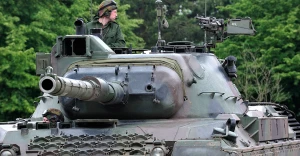
Ukraine to form demilitarized buffer zone on Russian territory: Expert analysis
According to a journalist and military analyst Oleksandr Kovalenko, with the change in Western support, Ukraine is poised to establish a demilitarized buffer zone on Russian territory, a strategy long delayed by international hesitations
Expert Oleksandr Kovalenko shared hiis analysis in an article for Minval.
In 2022, following Russia's invasion of Ukraine, Kyiv requested permission to use Western weapons against Russian targets but was initially denied. The stance shifted in 2024 as Western countries began supporting the idea, influenced by Russia's actions in the Kharkiv region, but also other factors.
Oleksandr Kovalenko noted that the long wait for approval to strike Russian territory significantly impacted Ukraine's military plans. Western military experts understood the need, but political leaders hesitated, fearing Russian retaliation.
To gain approval, Ukraine demonstrated Russia's vulnerability through operations like strikes on the Kerch Bridge, attacks on Crimea, drone raids on Moscow, frequent strikes on Russian oil refineries, and destruction of Russian aircraft and radar systems. These actions showed Russia's "red lines" were not inviolable.
A pivotal moment was the recent kamikaze drone strike on the Voronezh-DM radar, undermining Russia's nuclear security, to which Russia had no effective response.
Ukraine can target at least 50 km inside Russian territory with Western weapons like HIMARS, M270, and more. Even this range could significantly disrupt Russian military logistics and management near the border.
Ukraine's artillery, with a longer range and greater accuracy than Russian systems, can target Russian forces that once felt safe in regions like Bryansk, Belgorod, and Kursk. This capability would threaten the security of up to 53,000 Russian troops stationed near the Ukrainian border.
In a 2022 interview, Kovalenko advocated for a 50 km deep demilitarized buffer zone along the border, free of Russian military presence. This zone, protected by advanced Ukrainian artillery and missile systems, would make areas up to Belgorod and similar regions in Bryansk and Kursk highly dangerous for Russian forces.
According to Kovalenko, that is why such permission is crucial for Ukraine.
- On May 26, a Ukrainian intelligence drone struck the Voronezh M long-range target detection radar station in the city of Orsk, Orenburg region, Russia.
- News













































